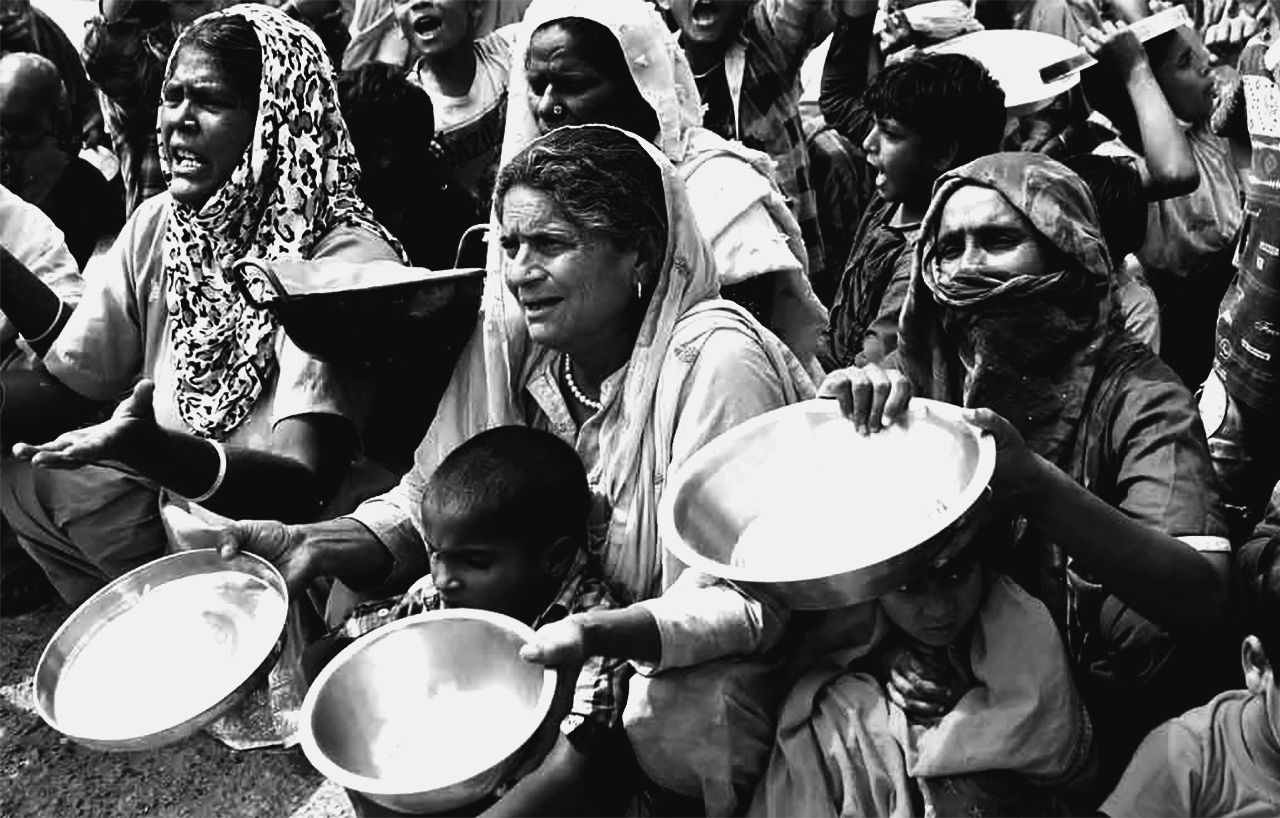Groundxero Report | 13th October, 2023
In the 2023 Global Hunger Index (GHI) released on Thursday, India ranks 111th out of the 125 countries with sufficient data to calculate 2023 GHI scores. With a score of 28.7 in the 2023 Global Hunger Index, India has a level of hunger that is serious. The sad state of hunger in India under Modi does not go well with its ambitions as a soon to be global economic power. In 2022, India ranked 107th out of 121 countries.
According to the 2023 GHI report, India for all its high growth numbers, has more serious problem of hunger than its neighbouring countries like Pakistan (102nd), Bangladesh (81st), Nepal (69th) and Sri Lanka (60th). However, India fared better than Sub-Sahara Africa, which recorded a score of 27 each. The report is a stark reminder of ongoing struggle of millions worldwide against hunger and poverty.
The GHI 2023 report has also put India’s child wasting rate at 18.7 percent highest in the world during 2018–22 and said it reflected acute under-nutrition. The rate of undernourishment in India stood at 16.6 per cent and under-five mortality at 3.1 per cent. The report also said that the prevalence of anaemia in women aged between 15 and 24 years stood at 58.1 per cent. The overall score for India has been put at 28.7 in the ranking, which is categorised as serious, according to the report.
The Global Hunger Index (GHI), prepared by European NGOs of Concern Worldwide and Welthungerhilfe, is a tool designed to comprehensively measure and track hunger at global, regional, and national levels, reflecting multiple dimensions of hunger over time. It is calculated annually, and its results appear in a report issued in October each year.
Each country’s GHI score is calculated based on a formula that combines four indicators that together capture the multidimensional nature of hunger:
Undernourishment: the share of the population whose caloric intake is insufficient;
Child stunting: the share of children under the age of five who have low height for their age, reflecting chronic undernutrition;
Child wasting: the share of children under the age of five who have low weight for their height, reflecting acute undernutrition; and
Child mortality: the share of children who die before their fifth birthday, reflecting in part the fatal mix of inadequate nutrition and unhealthy environments.
The four component indicators taken together reflect deficiencies in calories as well as in micro-nutrients.
For the 2023 GHI report, data were assessed for 136 countries. Out of these, there was sufficient data to calculate 2023 GHI scores for and rank 125 countries (by way of comparison, 121 countries were ranked in the 2022 report).
The 2023 GHI report shows that while some countries have made significant headway in reducing hunger little progress has been made on a global scale since 2015 : hunger remains serious or alarming in 43 countries. This stagnation relative to 2015 largely reflects the combined effects of several crises. These include the COVID-19 pandemic, the Russia-Ukraine war, economic stagnation, the impacts of climate change, and the intractable conflicts facing many countries of the world.
As usual the government of India has rejected the index calling it a flawed measure of “hunger” that does not reflect India’s true position. The Women and Child Development Ministry termed India’s ranking as “erroneous and having malafide intent”. The ministry added that the percentage of child wasting, as seen on the Poshan Tracker, has been consistently below 7.2 per cent, month-on-month, as compared to the value of 18.7 per cent in the GHI 2023. Also, there is hardly any evidence that child mortality (one of four indicators) is an outcome of hunger, it said.

